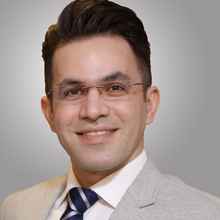EELS School (In-Person, Jülich) 2025
This comprehensive course is designed to help you better understand the science and technique of electron energy loss spectroscopy (EELS) and to take you from basics to advanced applications.
As a course attendee, you will learn best practices to set up and optimize your electron energy-loss spectroscopy (EELS) studies so you can capture and extract the maximum amount of compositional and chemical information from your samples
Benefit from a deeply engaging hands-on learning experience with practical applications and instructor feedback in the ER-C facility from 12 - 14 November 2025
Immerse yourself in discussions with fellow researchers to enhance performance and grow your collaborative network
Gain the advanced training necessary to thoroughly understand the EELS and 4D STEM techniques
Attain a professional certificate upon completion of the in-person course
Exclusive access to the extensive EELS & 4D STEM video library until November 30, 2026

Begin your journey in EELS analysis with the essential tools and logistics for the upcoming in-person school at Jülich.

Understanding the EELS fundamentals process and procedures foundation.

The training delves into the crucial aspect of measuring collection angles using DigitalMicrograph, emphasizing their impact on acquired spectra. A three-part course: Scattering angle, dispersion and aperture choice, and detector settings.

This course focuses on acquiring low and high-loss spectra in a DualEELS pair for precise energy-loss measurements, correcting plural scattering, and absolute quantification.

The training covers the effective use of the Gatan Image Filter for acquiring EFTEM images, including ZLP-filtered images, thickness maps, and elemental maps. It also teaches optimization of the filter and microscope for the best image quality.

Learn how to use the STEM alignment tool for precise calibration of convergence and collection angles in EELS acquisition. Master the centering of the brightfield disk within the spectrometer’s entrance aperture for optimal results.


